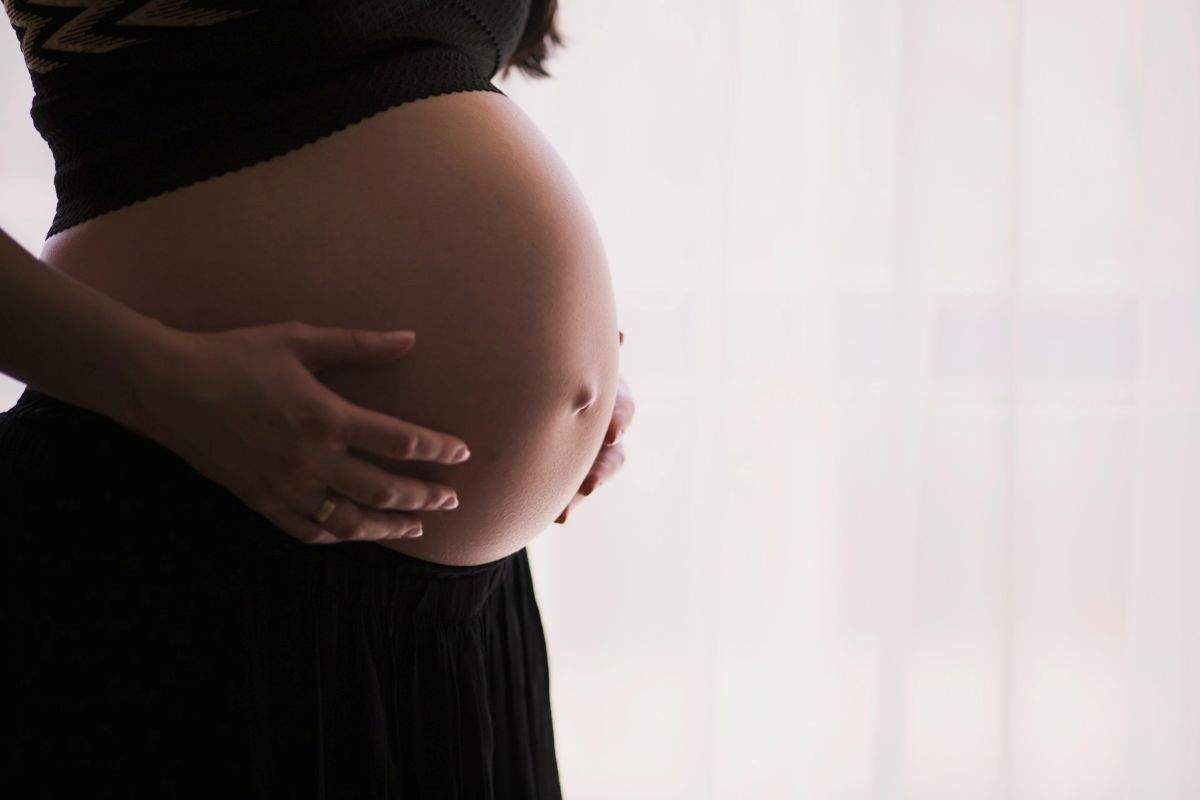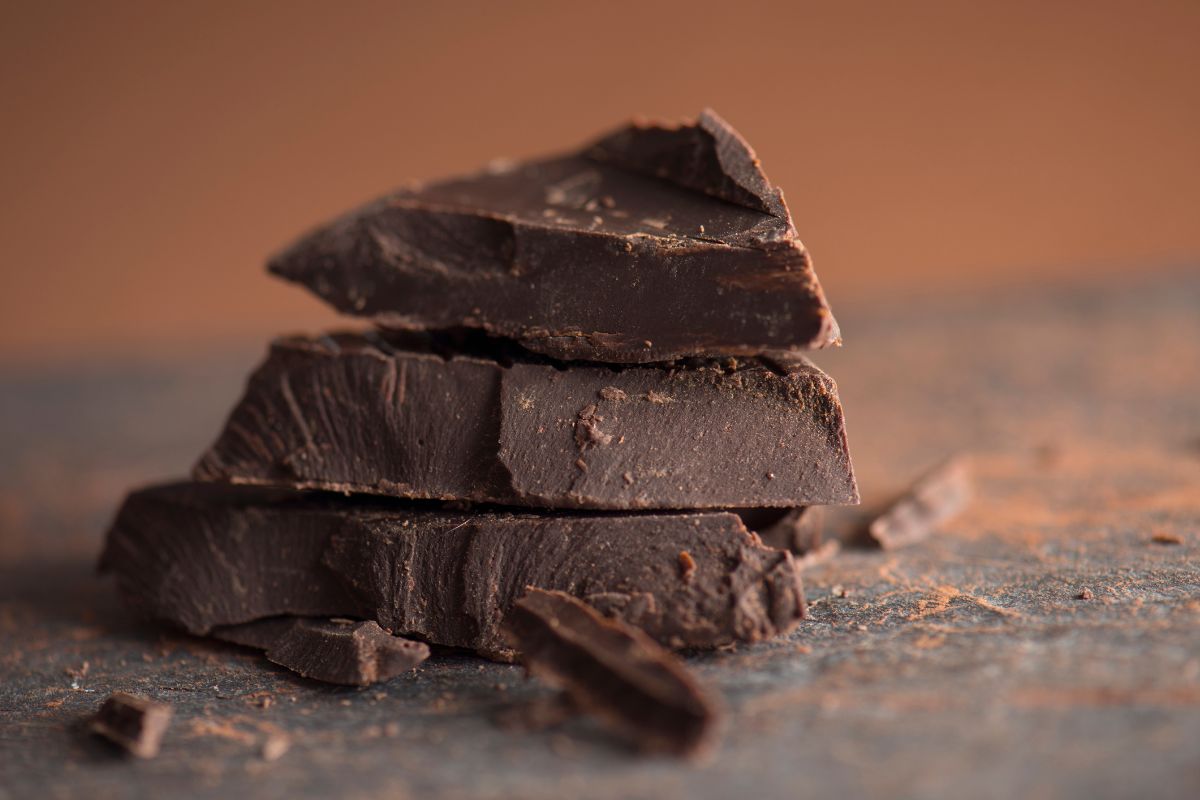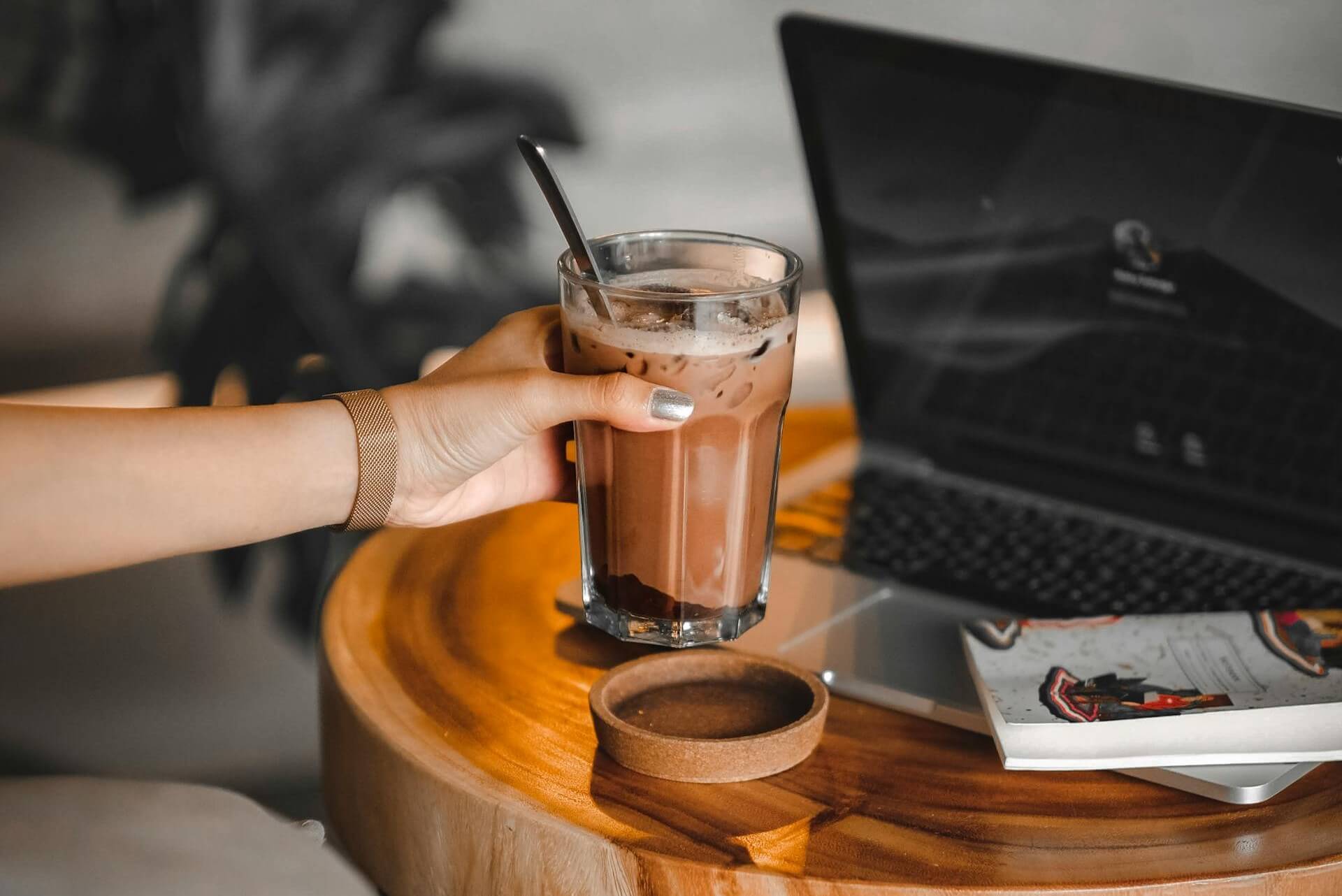Cacao is a beautifully supportive medicinal plant with a huge variety of benefits, but is cacao safe during pregnancy? The answer to this question varies depending on who you ask. That’s why this article breaks down the truth about cacao and pregnancy.

Cacao is a rich source of mood-enhancing compounds that can transform your mental state. But because it’s high in the blood-vessel opening stimulant theobromine, and it contains small amounts of caffeine, it’s worth being mindful of how much you consume and how often you consume it if you’re pregnant.
The main reason cacao needs to be used more mindfully during pregnancy is because a pregnant woman’s blood mixes with her baby’s blood throughout her pregnancy. What feels like a small amount of a substance for an adult can be a large dose for a tiny growing baby.
So, if you’re unsure how to safely use cacao while pregnant, here is the definitive science-based guide to the question: is cacao safe during pregnancy?

Is cacao safe during pregnancy?
The simple answer to this is yes, but in moderate amounts.
To better understand why it’s best to avoid cacao in excess, let’s take a closer look at three important active compounds in cacao:
-
Theobromine
-
Caffeine
-
Polyphenols
Theobromine in cacao and pregnancy
Theobromine is a substance known as a methylxanthine. Its superpower is that it gently stimulates the body to help you feel more energised and alert, but it does so in a less aggressive fashion than caffeine.
The end result is a steady, longer-lasting energy boost than caffeine. And… no crash, jitters or withdrawal symptoms when you stop taking cacao.
The reason theobromine is gentler than caffeine is that it's a vasodilator - this means it opens your blood vessels, increasing blood flow all over your body. It also works mainly in the periphery of your body (your arms, legs and face).
In contrast, caffeine is a vasoconstrictor (it tightens your blood vessels) and works mainly on your brain, so its stimulant effects are more dramatic and noticeable when they start working… and when they wear off.
Because theobromine dilates blood vessels, it’s great for reducing blood pressure - which is great news for pregnant women.
A US study of almost 3000 pregnant women found that those who ate more than 5 servings of very dark chocolate (like cacao) weekly during their first 3 months of pregnancy had a lower risk of a pregnancy-related high blood pressure condition known as pre-eclampsia than those who ate less dark chocolate.
And it’s not just the mother that benefits from cacao’s ability to open blood vessels. Theobromine can also improve blood flow to the developing baby.

Caffeine in cacao and pregnancy
While theobromine is a methylxanthine that benefits mother and baby, caffeine is another methylxanthine that’s not so helpful in pregnancy.
Research has found that caffeine readily crosses the placenta during pregnancy. But because developing babies don’t have the enzymes needed to break down caffeine, it builds up in their tissues and affects blood flow.
At high levels, caffeine can increase the risk of restricted growth, miscarriage, premature birth, low birth weight and stillbirth.
That’s why the American College of Obsteterics and Gynaecology advises expectant mothers to keep caffeine consumption below 200mg daily.
For context, a strong daily dose of cacao (28g) contains 35mg of caffeine (this amount can vary depending on the cacao bean used). So as this suggests, having a single cup of cacao doesn’t deliver an unsafe amount of caffeine… so long as you avoid large ceremonial doses (which can go up to 40g of cacao…and sometimes beyond).
Polyphenols in cacao and pregnancy
According to Dutch research into the most polyphenol-rich foods in the world, cacao has the highest levels of a specific type of polyphenol called catechins.
Polyphenols are molecules with anti-inflammatory effects. In adults, they help protect body cells from age-related environmental damage, and reduce the risk of heart and blood vessel disease.
This is great news for adults, but not so great for a developing foetus.
Several studies, including one published in the journal Frontiers in Pharmacology, have found that exposure to high levels of polyphenols in the third trimester of pregnancy can close the major blood vessel (called the ductus arteriosus) that ensures a baby gets the oxygen-rich blood it needs before it's born.
The take-home message?
It’s ok to have moderate amounts of cacao during the earlier stages of pregnancy, but it may be best to keep it to a minimum during the last trimester.
This doesn’t apply solely to cacao. You’ll need to minimise other foods that are high in polyphenols, such as green tea.

What about heavy metals in cacao
Recent research has shown that some cacao (depending on where it’s grown) has high levels of the heavy metals lead and cadmium.
Both can cause a variety of developmental problems in unborn babies, including nervous system conditions and low birth weight.
And for pregnant women, heavy metals can increase the risk of gestational hypertension, preeclampsia and miscarriage.
While many cacao and chocolate makers are more vigilant about testing for heavy metals these days, some aren’t.
The best way to make sure you keep your risk of heavy metal exposure low when consuming cacao during pregnancy (and even if you’re not pregnant - heavy metal poisoning can cause serious nervous system issues for everyone) is to check with your cacao supplier.
Ask if they have tested for heavy metals and if the levels fall within the accepted levels for the country you are in.
Avoid drinking any cacao that doesn't meet this requirement.
Is raw cacao safe during pregnancy?
Contrary to popular belief, raw cacao (aka unroasted cacao) has an active compound profile that’s very similar to mildly/moderately roasted cacao.
As such, they both carry similar pregnancy risks - so apply the rules mentioned above to all types of cacao.
Because roasting removes water from cacao beans, it’s likely that the concentration of caffeine in roasted cacao may be slightly higher than that of unroasted. And because high heat can destroy some polyphenols, ‘raw’ cacao may have a slightly higher percentage of polyphenols than roasted cacao.
However research shows that the gentle roasting cacao beans undergo before being turned into paste doesn’t significantly reduce the polyphenol content. (Although, cacao beans that are deep roasted for chocolate have noticeably lower polyphenol levels.)
There isn’t much research about these subtle differences between raw and roasted cacao, so it’s best to apply the following trimester-specific guidelines for cacao consumption when pregnant - whether that cacao is raw or not.

Best way to use cacao according to pregnancy trimester
Cacao and first trimester
Research suggests it’s safe to drink moderate amounts of cacao in the first trimester of pregnancy.
Check with your doctor for specific advice, but it may be safe to consume 15 to 20g of cacao up to 4 times a week.
Just make sure it’s cacao that’s very low in heavy metals and avoid eating lots of dark chocolate in addition to cacao.
Cacao and second trimester
Cacao pregnancy research also suggests it’s safe to drink moderate amounts of cacao during the second trimester of pregnancy.
As with the first trimester. It’s best to get specific advice from your doctor, but it may be safe to drink 15 to 20g of cacao up to 4 times a week.
Again, avoid eating a lot of dark chocolate if you drink cacao regularly.
Cacao and third trimester
Studies on cacao and pregnancy suggest the third trimester is the riskiest time for consuming cacao in its pure form and also as dark chocolate. Err on the side of caution and avoid it altogether or stick to no more than one 15g serving weekly.
Check with your doctor for specific advice.

Cacao ceremony and pregnancy
When you attend a cacao ceremony, it’s hard to know exactly how much cacao has been used to make the drink - unless you're the organiser (or you’re present when the cacao is made).
It’s also nearly impossible to be sure of the heavy metal content of the cacao you’re given in a cacao ceremony.
Cacao ceremonies often offer guests a ceremonial dose of cacao. Traditionally, this can range from 35g to 40g, but some practitioners who may want to give you a show-stopping experience may offer much higher doses than this without telling you.
Extremely high doses of cacao can be harmful to your heart, even if you’re not pregnant. And drinking a lot of cacao can also cause dehydration - which is particularly dangerous during pregnancy.
Because of these potential risks, it’s best to avoid group cacao ceremonies in pregnancy - especially during the third trimester.
Cacao and breastfeeding
It’s often said that in Mayan communities, cacao is given to mothers to rebuild and replenish after giving birth.
Anecdotal reports also suggest that cacao’s mood-boosting compounds (read more about these in this article on the benefits of cacao) like phenylethylamine, tryptophan and n-acetyl ethanolamides can help with ‘baby blues’ and even postpartum depression - making cacao a great food after giving birth.
However, if you’re breastfeeding, it’s important to remember that around 50% of the caffeine in a mother’s system crosses over into her breastmilk - which is bad news for baby because caffeine can have a negative effect on a baby’s mood and gut.
The good news is that since cacao is fairly low in caffeine, drinking it while breastfeeding is unlikely to harm your baby… if you stick to moderate amounts (no more than 20g daily).
But remember that everyone is different and your genetics, existing health conditions and medication can affect the way your body processes substances like caffeine. With this in mind, always check with your doctor if you’re breastfeeding and want to consume cacao regularly.
This article was an in-depth answer to the question: is cacao safe during pregnancy.


